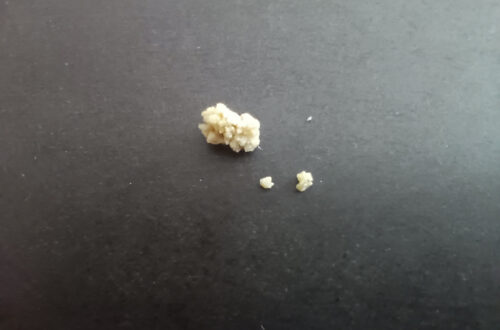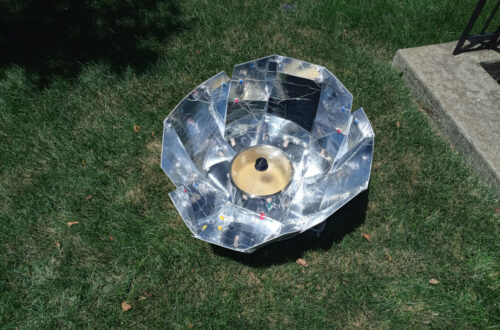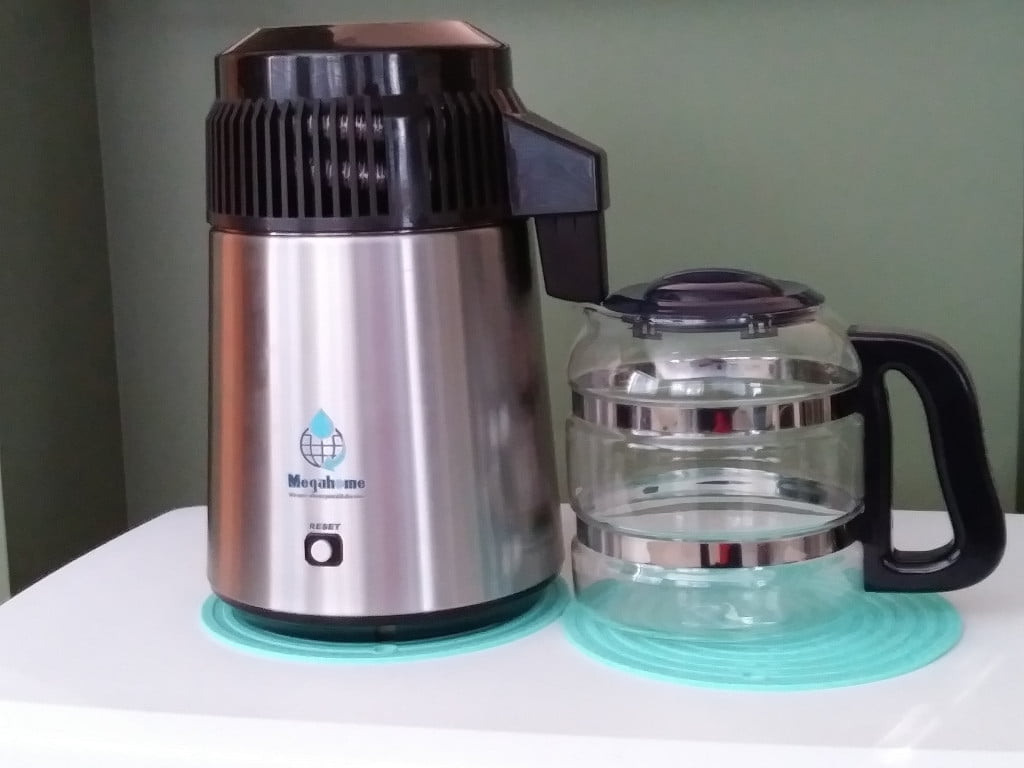
Pure Water from the Megahome Water Distiller
Updated on 2021-06-10
I became concerned about the water I drank a few years ago after reading about some of the things that cannot or are not removed from tap water; e.g. excreted pharmaceutical medicines, hormone disrupting chemicals, etc. I had been buying and drinking bottled spring water, but I got to thinking that maybe even spring water might have contaminants in it. Therefore, I decided to start drinking distilled water.
I was familiar with distilled water since I have used it in the past for steam irons and ultrasonic humidifiers. Steam irons usually require distilled water because the minerals in tap water can result in mineral buildup in the steam vents. Using distilled water in ultrasonic humidifiers results in easier cleaning and lower operating costs since you don’t have to buy a filter that some models offer to remove the minerals and chlorine in tap water. I’ve also used distilled water for automotive applications such as topping off lead acid batteries and diluting anti-freeze for engine coolant.
I also use distilled water for DIY laundry detergent, DIY wood floor cleaner (recipe near the bottom of the post) that I also use as a multi-surface cleaner, and DIY body wash.
In the past I purchased distilled water in 1 gallon plastic jugs from Whole Foods Market or Walmart. I usually purchased 6 – 10 gallons at a time and lugging all of that water from the store to home was a bit of a pain. I researched water distillers for home use on Amazon and added one to my wish list in 2016/2017. The water distiller I chose is called Megahome, manufactured by the Megahome Corp. based in Taiwan, distributed by Nutriteam, based in Vermont. However, at the time I thought the water distiller was a bit expensive at over $200, so the unit wasn’t on the top of my list of things I wanted to purchase.
After further aggravating a herniated lumbar disc in 2018 due to a fall and experiencing two painful back pain episodes thereafter, I began to think that all the lifting and bending required to transport the bottled distilled water probably wasn’t good for my back. When I purchased distilled water from Walmart, I usually purchased it late at night, after 11:00 p.m., meaning that I had to place the water in the shopping cart, take the water out for scanning at the self-service checkout, place the water back in the shopping cart, take the water out of the shopping cart and place it in the car, and then transport the water from the car to the house. That’s a lot of lifting and bending; not good for someone with spine issues.
Purchasing bottled water also resulted in quite a number of empty plastic gallon jugs. Curbside recycling is available where I live and I do use it, but the plastic gallon jugs quickly consumed a lot of space in the recycle toter. I began cutting the plastic gallon jugs in half using a box cutter to save space, but that required a little bit of additional time.
I finally decided toward the end of 2018 to pull the trigger and purchase the Megahome water distiller from Amazon. The timing was right because the manufacturer/distributor was offering a $15 instant rebate when purchasing the water distiller.
The water distiller comes impressively packed, I assume to reduce overall package size. The following items came inside the package for the distiller I purchased, model #MH943S:
- base unit or tank
- top cover, containing a fan and aluminum cooling duct
- plastic nozzle
- glass insert for plastic nozzle
- heavy duty power cord
- 6 charcoal packets
- glass carafe
- plastic handle
- supplies for attaching the handle to the carafe
- bottle of powdered citric acid
The plastic carafe handle comes in two parts. You attach the bottom part of the handle to the glass carafe using two screws and two metal bands. The top cover of the handle is then snapped in place on the bottom part of the handle. The glass insert is placed in the plastic nozzle. You then fold 1 or 2 charcoal packets (I use 2) almost in half and place them in the glass insert in a manner so that the packets catch and filter the distilled water as it drips from the cooling duct. The plastic nozzle then snaps in place in an area of the top cover. After cleaning the interior of the base unit or tank and the carafe, the distiller is then ready to be used.
The water distiller is designed to automatically shut off on its own using a thermal shutoff mechanism (note the reset button in the post header image), but I don’t recommend using that feature because eventually the thermal shutoff mechanism will wear out and you’ll have to purchase a replacement or send the unit to be repaired. One good suggestion I found while reading through the Amazon reviews before purchasing the distiller was to use a heavy duty timer. I found a nice digital heavy duty timer that works quite well. The timer is called the Brightown Heavy Duty Smart Digital Programmable Timer and can be purchased for a very reasonable price.
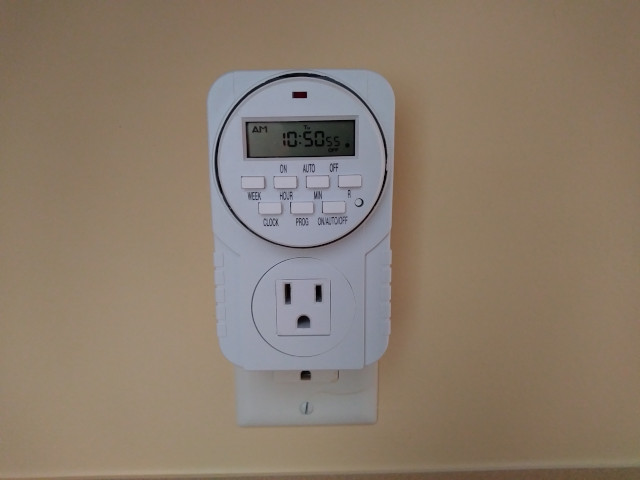
Note: Some of the following tips may require adjustment due to location and tap water quality differences.
I experimented a bit to distill as close to a gallon of water as possible without tripping the thermal shutoff mechanism. I currently set my digital timer to run the distiller for 5 hours and 40 minutes. I also fill the base unit with tap water just a smidgen above the fill line so that I can distill as close to a gallon of water as possible without tripping the thermal shutoff mechanism.
The user manual recommends replacing the charcoal packet(s) within 25 days. After a few months, I began to question the need to replace the charcoal packets so frequently. Therefore, I experimented a bit and I’m currently able to distill 35 gallons of water without any noticeable change in water odor or taste.
I have found that I can distill 4 gallons of tap water before needing to clean the distiller. The water in my location contains lime, so the interior of the distiller base unit ends up with a white, gritty residue buildup. The gritty residue reminds me of silica. Following is what my base unit usually looks like after distilling 4 gallons of water.
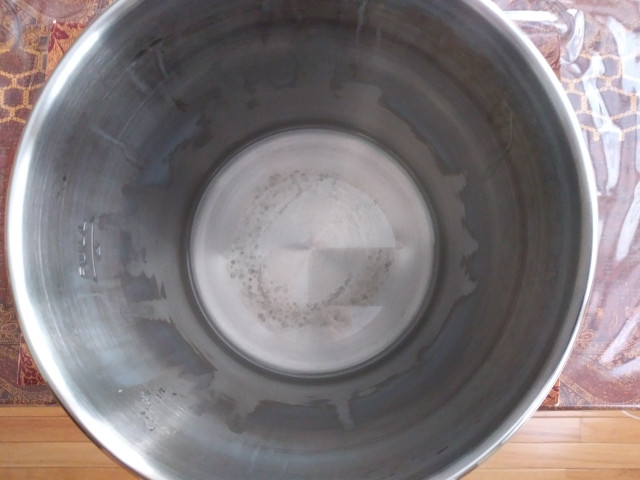
Following are images of what the remaining water from the distiller base unit looks like after distilling a gallon of my local tap water.
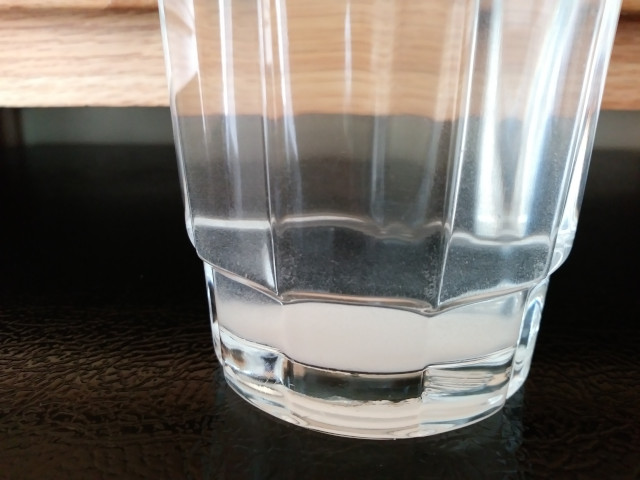 | 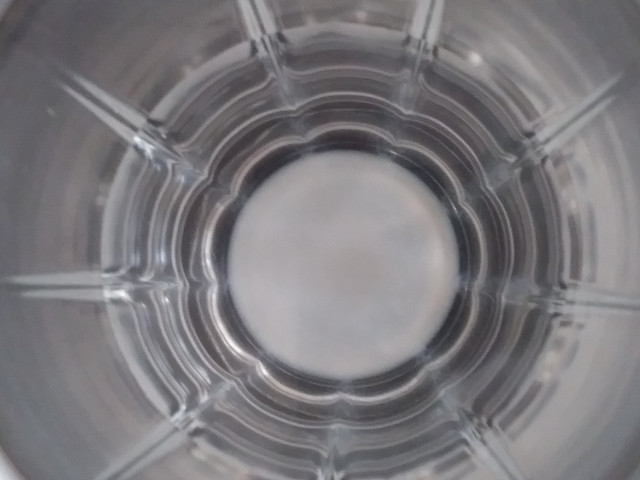 |
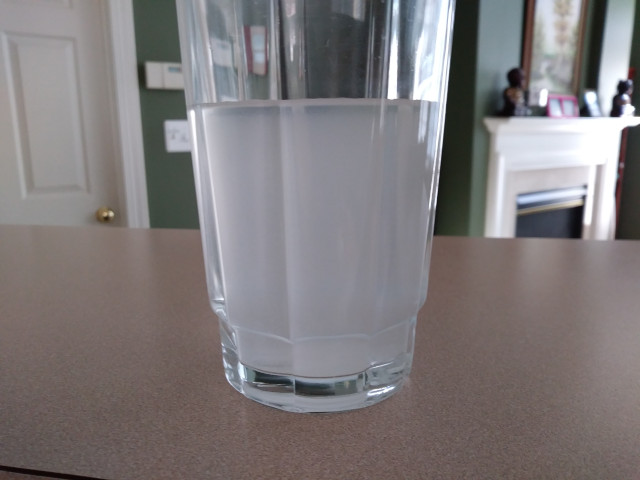 | 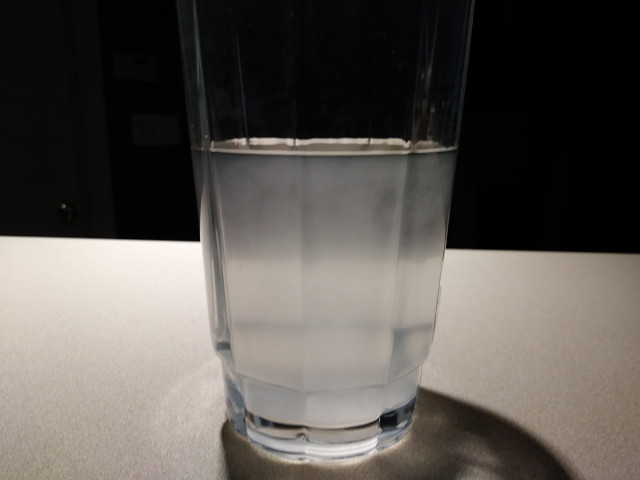 |
Another good suggestion that I picked up by reading the reviews for the MegaHome water distiller on Amazon was to use white vinegar instead of the citric acid that comes with the distiller. I tried using the citric acid one time to see how it performed, but I didn’t think it cleaned nearly as well as white vinegar.
I use one cup of white vinegar and fill the base unit within about an inch from the top with hot tap water. I let the solution sit for 12 hours or more. I then pour out most of the vinegar solution and then use a blue Scotch-Brite non-scratch scrub sponge to lightly scrub the interior of the base unit. I then dump the remaining solution, rinse the base unit interior with hot water, and then dry with paper towels. Following is how the base unit interior looks after cleaning.
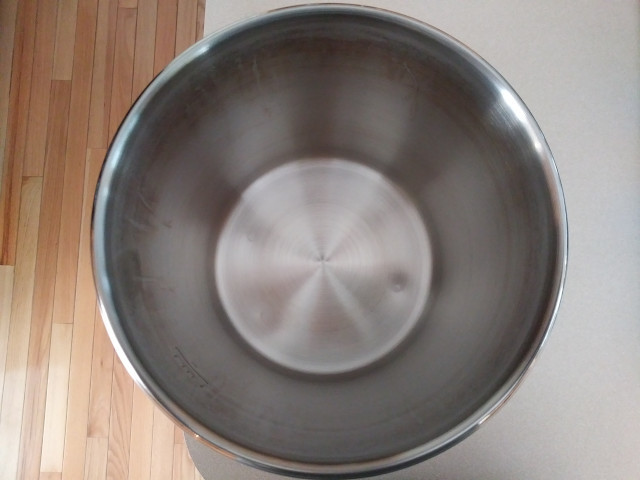
I purchased reuseable industrial quality, food grade safe plastic one gallon jugs with lids from BottleStore.com when I decided to purchase the MegaHome water distiller. I try to keep close to 20 gallons of distilled water on hand. When I am down 4 gallons, I begin distilling more water. The water is stored on plastic storage shelving in my home office.
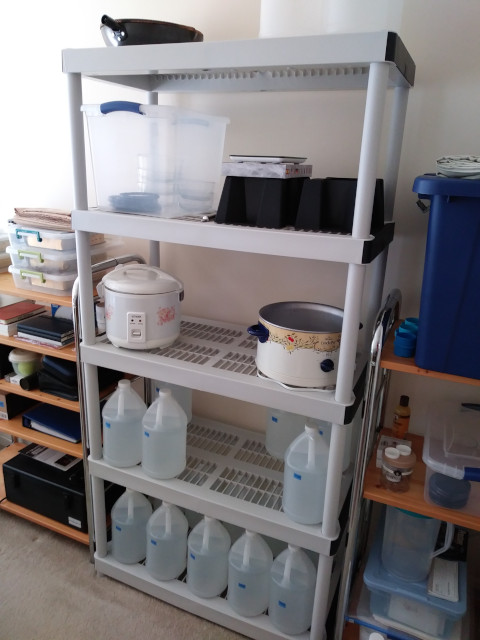
The Megahome water distiller is noisy and puts out a bit of heat. However, I am quite happy overall with the water distiller and the water tastes just as good as the distilled water you get from the store. While it is a bit more work to distill the water and clean the water distiller, I’m saving my back from transporting bottled water from the store and I’m reducing my use of plastic. I also don’t have to worry about the store running out of water which sometimes happened when I purchased water.
2021-02-28 Update
I was cleaning the distiller a few weeks ago and I noticed rust on the underside of the upper steam dome in the distiller top.
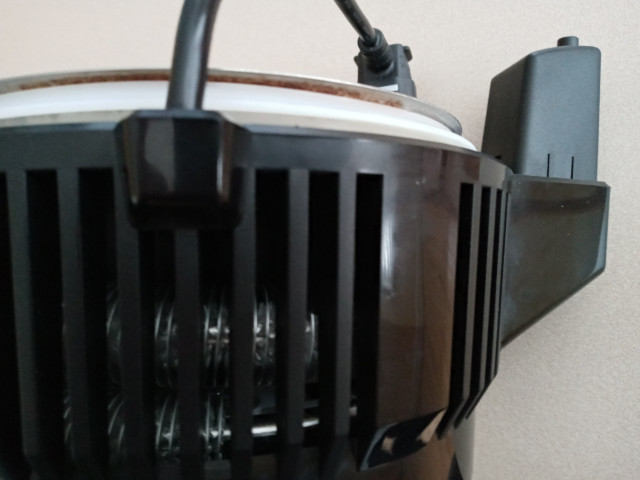
I’m really disappointed with the rust issue. The upper steam dome is composed of 304 stainless steel. I thought stainless steel didn’t rust. However, according to the link, the metal is subject to crevice corrosion in warm chlorine environments. Boiling chlorinated tap water…I think that must be the issue. Maybe the company should look into using 316 stainless steel.
I became interested in emergency preparedness last year due to the COVID madness perpetrated by governments worldwide. In online reading and viewing videos, I discovered the Berkey water filter, which came with rave reviews. Although the Berkey water filter does not produce water as pure as distilled water, I’m quite confident the system will not have rust issues like the MegaHome water distiller does.
2020-003



